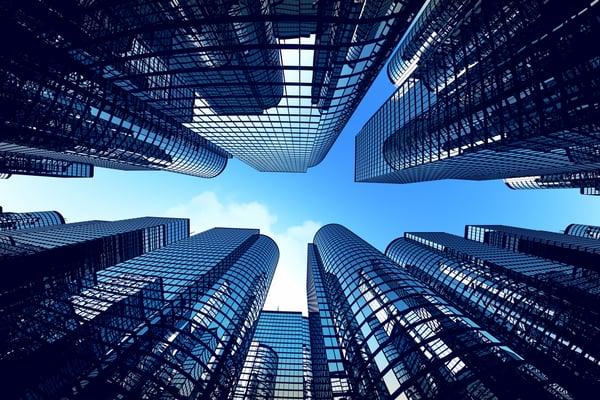The Role of MEP Engineering in the NYC Green New Deal

The NYC Green New Deal establishes the ambitious target of cutting building emissions by 40% by 2030. Such a goal will require major upgrades in existing buildings, and these will come at a high cost for owners. The NYC Urban Green Council estimates that the necessary investment during the next decade will be around $20 billion.
The official name of the NYC Green New Deal is the Climate Mobilization Act. It includes Local Law 97, which mandates two emission cuts for buildings: 40% by 2030 and 80% by 2050.
- The resulting cost for building owners over the next 10 years will range from $16.6 billion to $24.3 billion, according to a study by the Urban Green Council.
- Considering the scale and amount of building upgrades required, LL97 could create around 141,000 jobs.
Energy consumption in buildings can be attributed mostly to mechanical, electrical and plumbing systems. These installations must be upgraded to reduce energy consumption and emissions, and only experienced MEP engineers can design the most effective solutions.
Improve your building efficiency and cut energy bills.
What Is the Scale of the Climate Mobilization Act?
The emissions reduction target will affect around 50,000 buildings in NYC, and numerous retrofits can be expected each year. Consider that only $235 million were spent on energy efficiency upgrades in 2018, while the projected investment to meet LL97 is around $20 billion over 10 years.
There are numerous possibilities when upgrading a building, and the effectiveness of a specific measure varies in each case. The best starting point is an energy audit, since it provides a list of efficiency measures, with a technical and financial feasibility analysis. The following measures tend to achieve good results in many types of buildings:
|
ENERGY EFFICIENCY MEASURE |
BENEFITS |
|
New facades and windows |
Buildings lose heat through their envelope during winter, and they gain heat during summer. This increases the workload on heating and air conditioning systems. Any measures that reduce heat gain and heat loss can improve energy efficiency. |
|
Efficient air conditioning |
Air conditioning is the largest load during summer. While it does not produce emissions at the point of use, the resulting emissions at power plants are significant. As of 2018, New York still gets around 70% of its electricity from fossil fuels. As a result, each kWh used has a high carbon footprint. |
|
Efficient boilers and water heaters |
Air conditioning is the largest electrical load, but heating represents the largest fraction of total energy consumption in NYC buildings. Many old buildings have oversized steam heating systems that are very inefficient. |
|
LED lighting |
The dollar savings that can be achieved with LED lighting are much less than those possible with heating and cooling efficiency. However, LED lighting is an excellent investment in terms of cost and benefit, and a payback period of less than one year is possible in some buildings. LED lighting works best when upgrading fixtures with long operating schedules. Some examples are office lighting, outdoor lighting, and the common area lighting in multifamily buildings. |
|
Building management systems (BMS) |
Upgrading to efficient building systems is a major step to save energy. However, MEP systems must also be configured efficiently. A BMS can control parameters such as lighting schedules and thermostat settings. |
Since every building is unique, the effort required to cut emissions will be different in each property. Old and inefficient buildings require significant upgrades, especially those with oversized steam boilers. However, glass skyscrapers will also be subject to demanding requirements, since their heating and cooling costs are high.

Low income housing faces a unique challenge, since there are less funds available to reinvest in buildings. This can be addressed by applying less stringent requirements in the affordable housing sector, or by applying prescriptive and low-cost measures.
Carbon trading can help meet the requirements of the Climate Mobilization Act. Some buildings may have conditions that allow a drastic reduction of emissions with modest investment, while others may require significant investment just to reach the goal. With a carbon trading program, building owners can “purchase” part of their emissions reduction target from other properties.
Local Law 33 of 2018 will provide an additional incentive to upgrade buildings in NYC. It covers all buildings that are subject to energy benchmarking, requiring the disclosure of an energy grade from A to F, as well as the ENERGY STAR score. Tenants will know exactly how buildings are performing before renting, and efficient buildings will be in high demand.

Michael Tobias
Michael Tobias, the Founding Principal of NY Engineers, currently leads a team of 150+ MEP/FP engineers and has led over 4,000 projects in the US
Join 15,000+ Fellow Architects and Contractors
Get expert engineering tips straight to your inbox. Subscribe to the NY Engineers Blog below.

